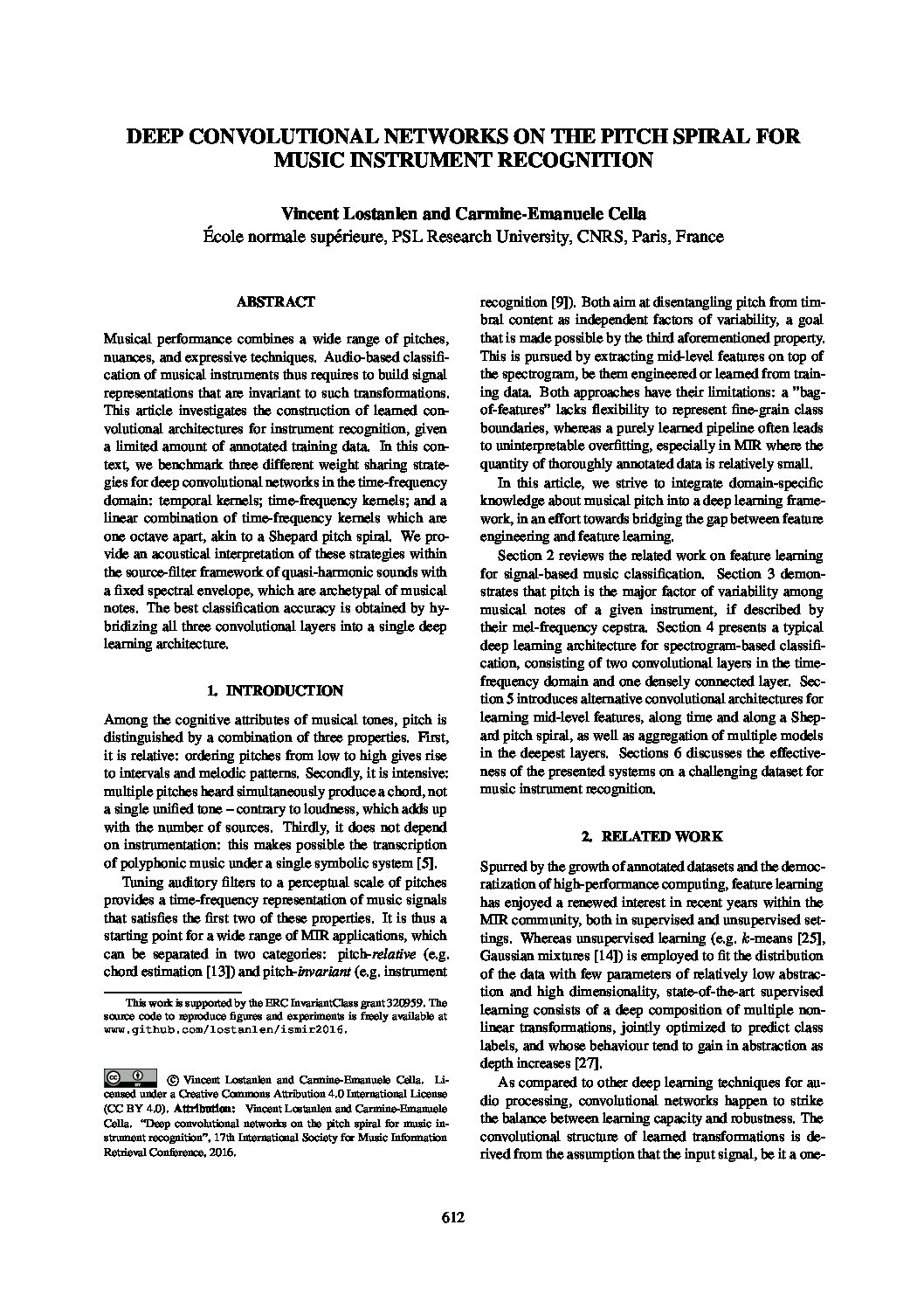Deep Convolutional Networks on the Pitch Spiral for Musical Instrument Recognition
Musical performance combines a wide range of pitches, nuances, and expressive techniques. Audio-based classification of musical instruments thus requires to build signal representations that are invariant to such transformations. This article investigates the construction of learned convolutional architectures for instrument recognition, given a limited amount of annotated training data. In this context, we benchmark three different weight sharing strategies for deep convolutional networks in the time-frequency domain: temporal kernels; time-frequency kernels; and a linear combination of time-frequency kernels which are one octave apart, akin to a Shepard pitch spiral. We provide an acoustical interpretation of these strategies within the source-filter framework of quasi-harmonic sounds with a fixed spectral envelope, which are archetypal of musical notes. The best classification accuracy is obtained by hybridizing all three convolutional layers into a single deep learning architecture.

